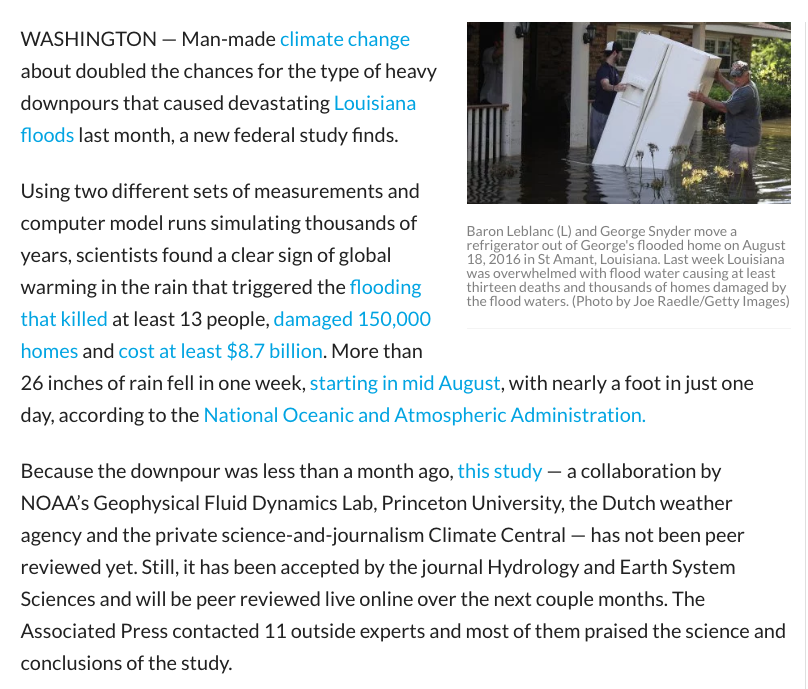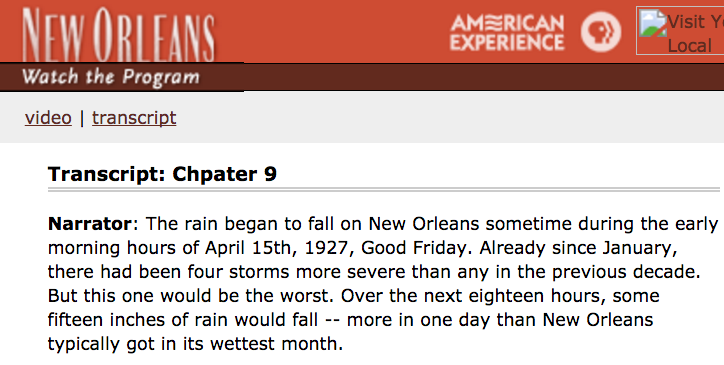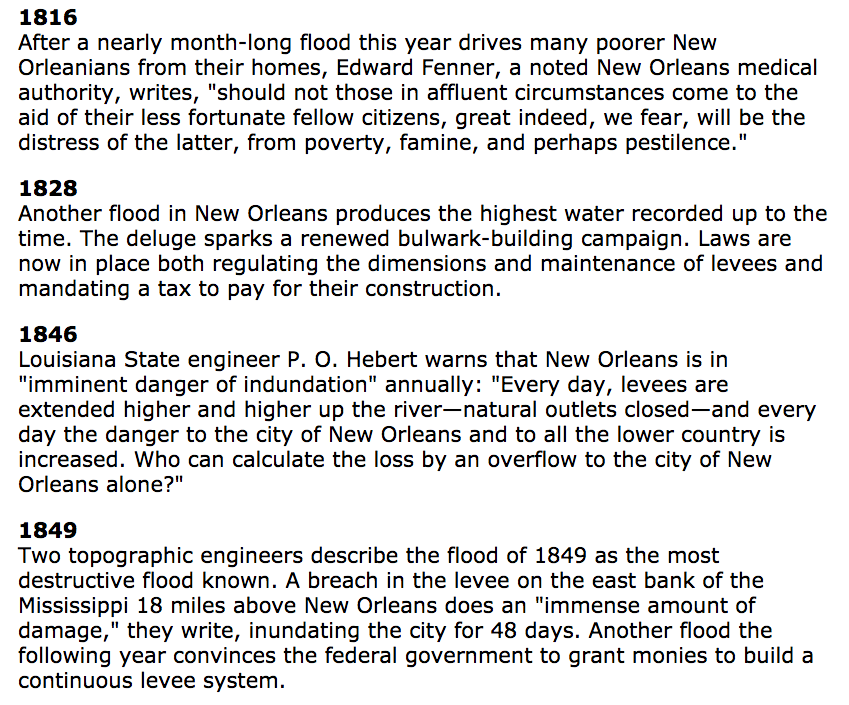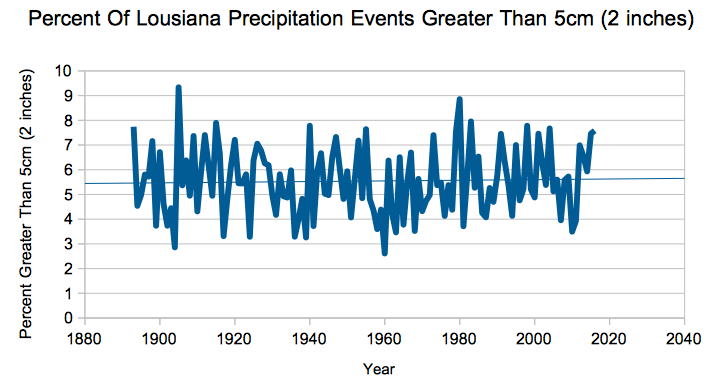NOAA bastardizes science in Louisiana rain modeling study – Climatologists, data, & history refute NOAA’s claims
#
Dr. Pielke, Sr., wrote that “NOAA should be embarrassed doing this press release. “It is only submitted for review! But PR shows NOAA bias,” he added.
Climate skeptics scoff as NOAA quickly links global warming, La. floods – Wash Times features Climate Depot – Heidi Cullen’s involvement came as a red flag for Georgia Tech climate scientist Judith A. Curry, who also raised questions about releasing the study before a peer review. “This study involves several scientists from NOAA, along with a scientist that works for an advocacy group,” said Ms. Curry in an email. “NOAAhas a team in Boulder, Colorado (led by Marty Hoerling) that typically conducts quite sensible analyses of such extreme events. So I don’t know why NOAA issued such a press release about a new publication without checking with this other team at NOAA.”
NOAA Slammed For ‘Laughable,’ ‘Biased’ Study Blaming Global Warming For Louisiana Floods
NOAA exploits Louisiana floods in flawed study
1000 year rainfall study suggests droughts and floods used to be longer, worse

Flashback NOAA 1974: ‘Extreme weather events blamed on global cooling’ – NOAA October 1974: ‘Many climatologists have associated this drought and other recent weather anomalies with a global cooling trend and changes in atmospheric circulation which, if prolonged, pose serious threats to major food-producing regions of the world’

Chicago Tribune – Nov. 25, 1981 http://archives.chicagotribune.com/1981/11/25/page/27/article/perspective …

Analysis: NOAA rain modeling study ‘has no scientific basis, and ignores all available actual data’ – ‘Man-Made Modeling Abuse Increases The Odds Of NOAA Fraud’ – Real Climate Science website: ‘The NOAA
Flashback NOAA 1974: ‘Extreme weather events blamed on global cooling’
In the 1970s, extreme weather events were blamed on global cooling
Interestingly, in the 1970s it was common for severe weather anomalies (for example, the deadly catastrophic drought plodding throughout the continent of Africa) to be linked to the global cooling occurring at that time. In 1974, NOAA acknowledged that many climate scientists had linked the drought and other extreme weather anomalies to the -0.5°C drop in temperatures that had occurred from the 1940s to 1970s.
“In the Sahelian zone of Africa south of the Sahara, the countries of Chad, The Gambia, Mali, Mauritania, Niger, Senegal, and Upper Volta are enduring a drought that in some areas has been going on for more than six years now, following some 40 previous years of abundant monsoon rainfall. And the drought is spreading—eastward into Ehtiopia and southward into Dahomey, Egypt, Guinea, Kenya, Nigeria, Somalia, Tanzania, and Zaire. … Many climatologists have associated this drought and other recent weather anomalies with a global cooling trend and changes in atmospheric circulation which, if prolonged, pose serious threats to major food-producing regions of the world. … Annual average temperatures over the Northern Hemisphere increased rather dramatically from about 1890 through 1940, but have been falling ever since. The total change has averaged about one-half degree Centigrade, with the greatest cooling in higher latitudes. A drop of only one or two degrees Centigrade in the annual average temperature at higher latitudes can shorten the growing season so that some crops have to be abandoned. … [T]he average growing season in England is already two weeks shorter than it was before 1950. Since the late 1950’s, Iceland’s hay crop yield has dropped about 25 percent, while pack ice in waters around Iceland and Greenland ports is becoming the hazard to navigation it was during the 17th and 18th centuries. … Some climatologists think that if the current cooling trend continues, drought will occur more frequently in India—indeed, through much of Asia, the world’s hungriest continent. … Some climatologists think that the present cooling trend may be the start of a slide into another period of major glaciation, popularly called an “ice age.”
But, like now, there were still a collection of scientists willing to reconsider the common-knowledge “beliefs” of the time. For example, Boer and Higuchi (1980) investigated the “belief” that more extreme climate variability accrued as temperatures cooled, concluding that …
Analysis: NOAA rain modeling study ‘has no scientific basis, and ignores all available actual data’ – ‘Man-Made Modeling Abuse Increases The Odds Of NOAA Fraud’
NOAA says that nearly a foot of rain in one day in Louisiana confirms their models showing man-made climate change has increased the odds of floods.
NOAA: Climate Change increased odds for Louisiana downpour | FOX 61
On April 15, 1927 New Orleans got 15 inches of rain in 18 hours during the largest flood in US history.
American Experience | New Orleans | PBS
New Orleans was founded in 1717, against the objections of the chief engineer who said it flooded all the time.
NOVA | Storm That Drowned a City | A 300-Year Struggle | PBS
There has been no increase in heavy rain.
The NOAA study has no scientific basis, and ignores all available actual data. Software models can be written to produce any result the author wants to produce. They are not evidence of anything other than deep corruption at NOAA.…
25 New Papers Confirm A Remarkably Stable Modern Climate: Fewer Intense Storms, Hurricanes, Droughts, Floods, Fires…
25 New Papers Confirm A Remarkably Stable Modern Climate: Fewer Intense Storms, Hurricanes, Droughts, Floods, Fires…
It has by now become common practice for just about any and every unusual weather occurrence, extreme temperature anomaly, or seismic event to be somehow, someway linked to the human practice of using energy derived from fossil fuels. No hurricane, flood, drought, storm, wildfire … is spared from potential anthropogenic implication.
Last week, a named hurricane (Hermine) that ultimately devolved into a tropical storm landed along the Florida coast — the first landfall in 11 years. As expected, the usual suspects reflexively blamed the storm on humans.
When a volcano erupts, the headliners are quick to point out that humans have made volcanic eruptions more likely.
When wildfires consume the landscape, human-caused warming is claimed to be fueling them.
In one year, human-caused warming can be said to be a cause of catastrophic drought in Texas.
“2011 Texas drought was 20 times more likely due to warming, study says”
A few years later, human-caused warming leads to catastrophic flooding in Texas.
Even shifting plates beneath the Earth’s crust (earthquakes) can be creatively connected to human-caused climate change.
Those who may dare to question the link between humanity’s growing oil, gas, and coal consumption and a weather or tectonic event are swiftly called “climate deniers,” and the substantive discussion that never happened (and was never going to happen) ends then and there.
In the 1970s, extreme weather events were blamed on global cooling
Interestingly, in the 1970s it was common for severe weather anomalies (for example, the deadly catastrophic drought plodding throughout the continent of Africa) to be linked to the global cooling occurring at that time. In 1974, NOAA acknowledged that many climate scientists had linked the drought and other extreme weather anomalies to the -0.5°C drop in temperatures that had occurred from the 1940s to 1970s.
“In the Sahelian zone of Africa south of the Sahara, the countries of Chad, The Gambia, Mali, Mauritania, Niger, Senegal, and Upper Volta are enduring a drought that in some areas has been going on for more than six years now, following some 40 previous years of abundant monsoon rainfall. And the drought is spreading—eastward into Ehtiopia and
Sorry Alarmists, Even Warmist Joe Romm Confirms The Pause
He cherry picks the latest 12 month average, which just so happens to be a miniscule 0.074C higher than at the same stage in 1998. He forgets to tell you though that the current El Nino has been much longer lasting than 1998’s, and consequently temperatures in late 2015 were already comparatively elevated.
He also forgets to tell you that August 2016 is 0.07C cooler than the same month in 1998, or that the last five months have also been cooler this year.
In reality, these differences are no more than weather, and have no significance either way.
…
Romm then goes on to mention that there is another satellite dataset, RSS, which somehow disproves the “deniers’” UAH. Unfortunately for the discredited Romm, the RSS data show exactly the same as UAH’s – the current 12-month average is 0.081 higher than in 1998, but again we find no statistically warming since 1998.
…
We all accept that there was warming between 1979 and 1998, which coincided with the PDO switch and the movement of the AMO from its coldest state to its warmest.
It is what has happened since that matters. You know, that thing called the “Pause”, that even the UK Met Office, in July 2013, accepted was real, prior, of course, to the latest super El Nino. Indeed, it was so real, they even wrote a paper about it.
But even if we assume that the rise in temperature since 1998 is part of an underlying change, then so what?
A change of 0.07C over 18 years equates to 0.4C/century. This is way below anything forecast by the IPCC, Joe Romm or any of his well rewarded cohorts, as John Christy points out:
If all we are arguing about is an inconsequentially small rise in temperatures in the next century, one that is almost certainly beneficial, don’t the wheels fall off Joe Romm’s alarmist bandwagon?…









![GL_MT_2015[1879102] GL_MT_2015[1879102]](https://notalotofpeopleknowthat.files.wordpress.com/2016/09/gl_mt_20151879102_thumb.png?w=900&h=615)